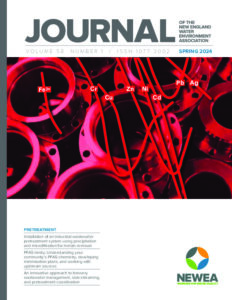By Kate Novick
A near miss is an event that causes no losses, but could have if conditions were slightly different. It is defined as “a narrowly avoided loss.” Companies that have worked hard to reduce workplace accidents will tell you that managing near miss incidents is a key technique they used to achieve their goal.
Scientists have calculated the ratios between near misses and workplace accidents and have repeatedly validated the Heinrich 300-29-1 Model. It shows there are 300 near misses for every 29 minor injuries for every 1 major injury.
Likewise, it is a best practice to manage near miss incidents beyond workplace accidents to reduce other losses such as extended service interruptions, property losses, water quality events, and reputation hits.
Near misses show us what types of undesirable events are apt to occur at our facilities from accidents to mechanical failures to human errors and beyond.
For example, if an intake screen freezes up every time the weather drops below 0℉, then we know it is a likely event because it occurs regularly. If that same intake screen almost freezes every winter, narrowly avoiding significantly reduced water production, we can confidently predict that it is only a matter of time that it will freeze with significant consequences. Managing near misses helps us prevent problems before they occur.
Every year, thousands of professionals use the near miss management technique with great success in reducing losses, and it can be applied to your water or wastewater utility too. Here is an example of how it could work.
Say you get a call at 2 a.m. on a Sunday morning that water pressure is dropping at a certain location in the system. A field crew locates a line break and in response, the crew establishes a bypass line to continue operations while making the repair.
However, the available bypass was just long enough to cover the distance. If the distance had been any longer, crews would have had to wait at least two hours to acquire the needed bypass line.
Also in this hypothetical situation, a bypass pump was not needed, which was a good thing because no pump was available that morning before dawn with the proper connections in place. The public communications staff was not needed that Sunday either. This was another stroke of luck because both public communications staff members were unreachable that day.
This example, which is based on a real event, consists of a collection of fortuitous conditions that resulted in a quick and successful repair. Multiple pain points were narrowly avoided. It was a near miss.
If the break happened at another location in the system, or if the bypass line was not long enough to cover the distance, or if a pump was needed for the bypass, or if public communication activities were complex, the result would not have been as quick or as successful. It is reasonable to estimate that the situation could have been much worse, resulting in impacted water quality, public boil water notices, service outages, and other undesirable consequences.
This is just one example of many near misses that are experienced regularly. Near misses are a normal part of utility operations, and they occur due to many types of events that happen, including botched chemical deliveries, disgruntled worker acting out in the workplace, floods and hurricanes, power outages, theft, unauthorized access to equipment, and many others.
To leverage these near misses into a successful management technique, utility leadership and management staff should encourage employees to identify these near misses and formally discuss them.
After experiencing a near miss, take stock of how the response played out. If this condition occurred in another part of the system, would this response have been as successful? If this condition occurred again, would it be wise to respond in the same way or are there changes that could be taken to improve the next response?
These changes could be actions like purchasing response equipment ahead of time; preparing equipment for temporary or emergency operations; updating the capital improvement plan to reduce vulnerabilities to natural and man-made hazards; creating a new policy and procedure for operations staff; cross-training on a specific task; performing a tabletop emergency exercise or drill; or updating the emergency response plan.
Due to the spectrum of all the possible undesirable events that could happen at a utility, leadership and management staff must prioritize emergency preparedness and prepare staff to be ready for anything. Identifying, naming, and reflecting on a near miss and incorporating the findings into management action is one excellent way to contribute to a state of readiness. Doing this repeatedly over time will increase your utility’s resilience.



No comments yet.